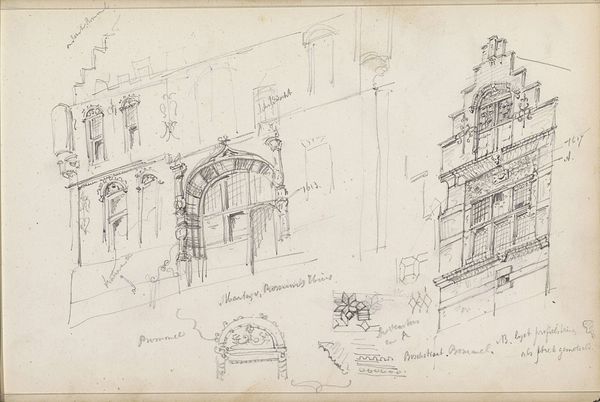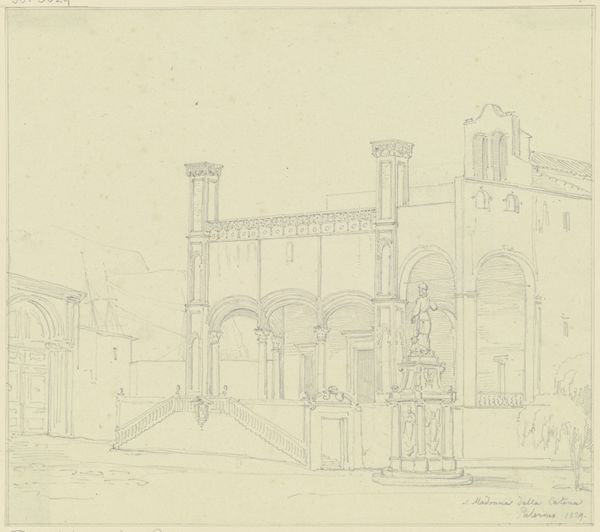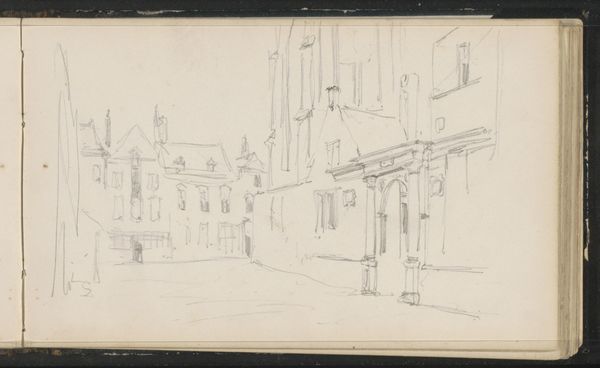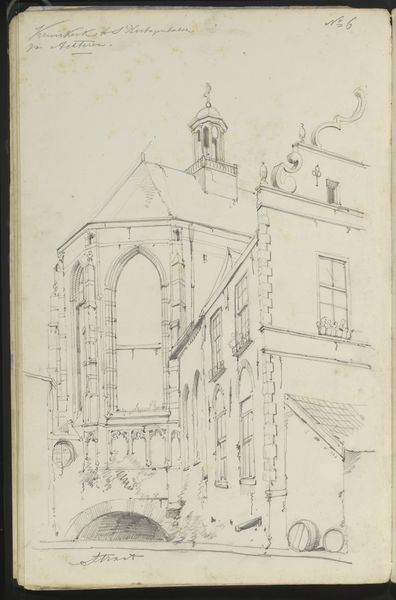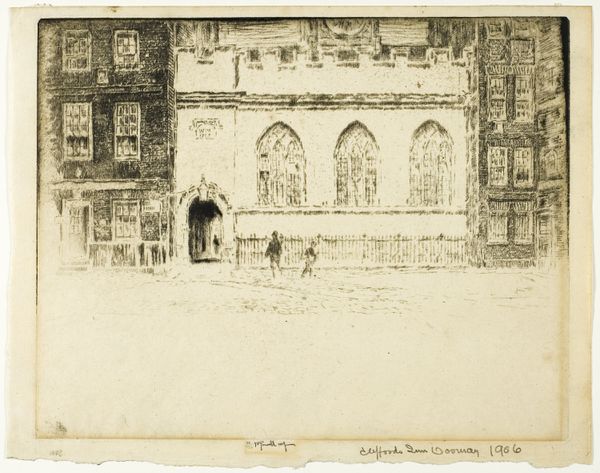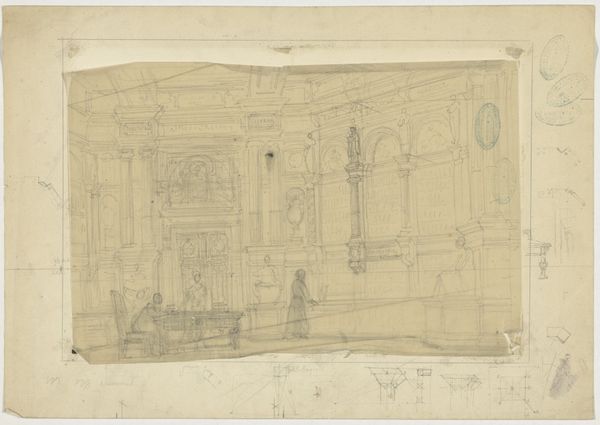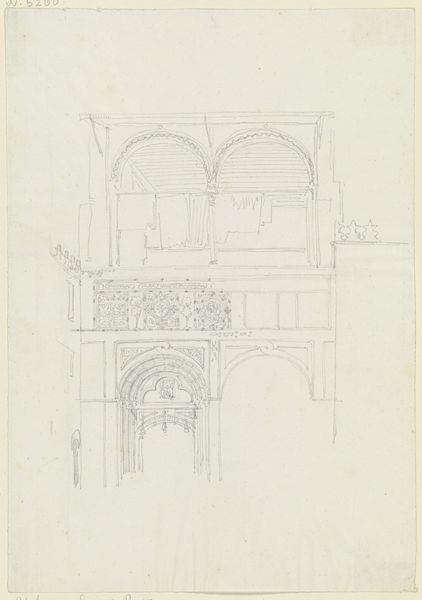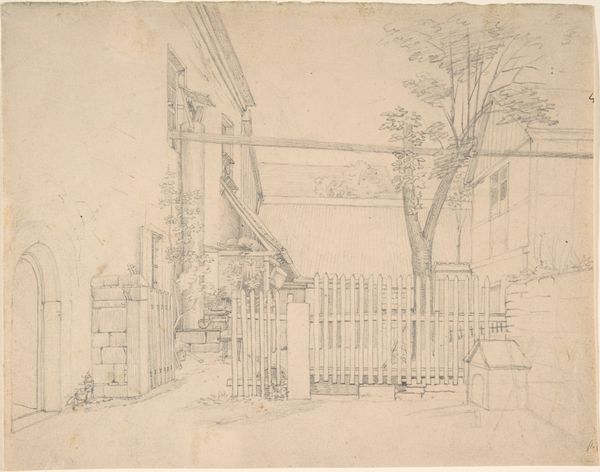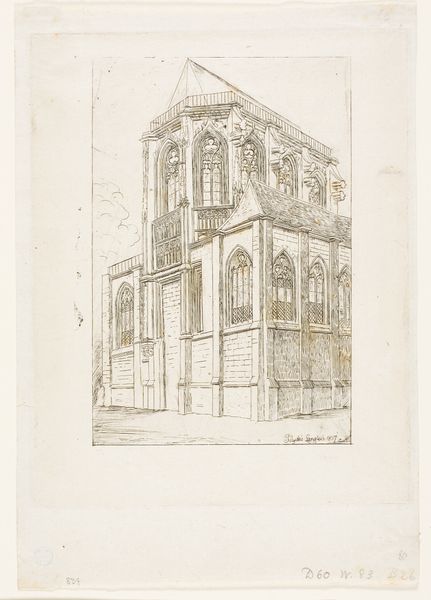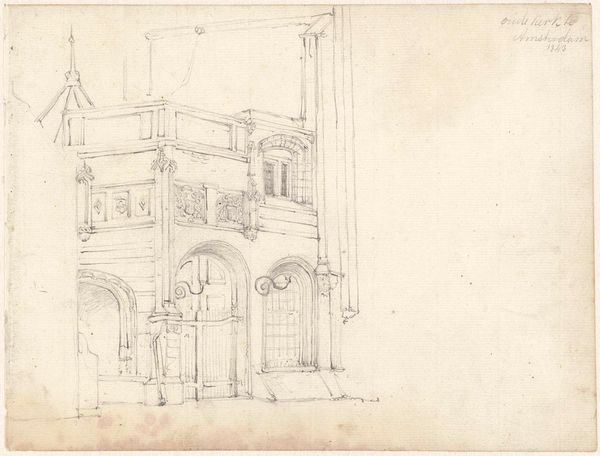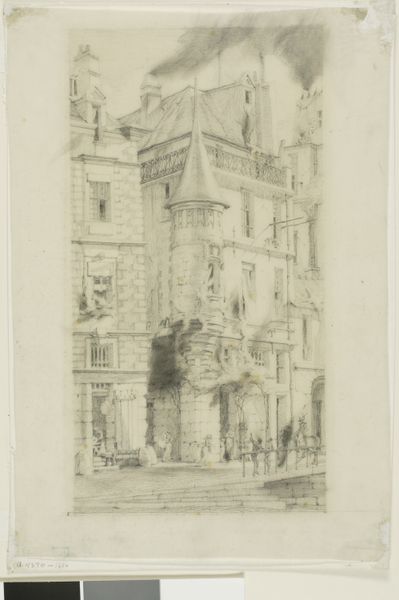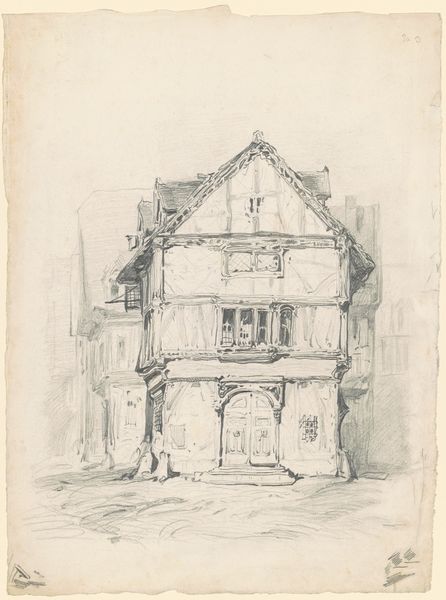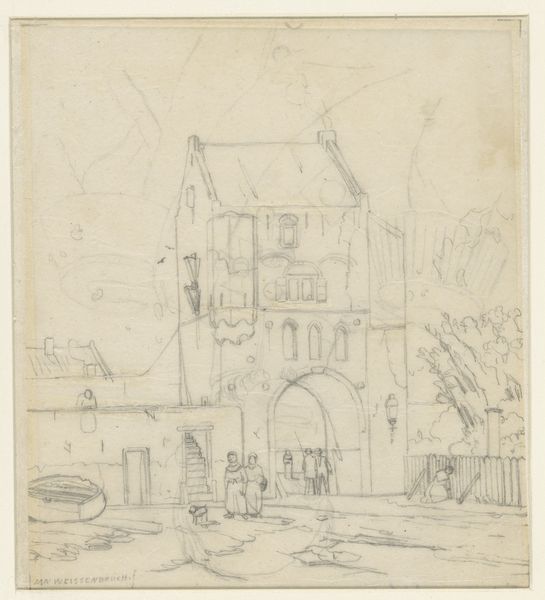
drawing, paper, pencil
#
drawing
#
paper
#
pencil
#
cityscape
#
building
Dimensions: height 216 mm, width 262 mm
Copyright: Rijks Museum: Open Domain
Curator: This captivating pencil drawing is titled "Façade met erker in de Bogenstrasze te Münster," and it's attributed to Jan Striening, likely created sometime between 1864 and 1868. The work meticulously captures a street scene, focusing on a building with a prominent bay window. Editor: It’s intriguing how the delicate pencil strokes create this ephemeral, almost dreamlike impression. The detail work around that bay window is impressive given the medium, though the lines are quite faded. Curator: Yes, Striening’s choice of medium certainly lends a specific mood. The sketch highlights an emphasis on the play of light and shadow which, through a Formalist lens, we can observe as shaping the viewer's experience of volume and depth. Note how the use of line quality implies form but in the process also highlights the intrinsic flatness of the support. Editor: And the use of pencil, paper, these readily available, accessible materials point to a mode of production that could be quite democratic. Consider this against the backdrop of 19th-century Münster society. What types of architecture was being favored at the time? Was he using his artmaking for planning of new developments? The question of intention weighs on the image’s content here. Curator: It does indeed. I appreciate your considering those socio-economic factors, but from a structuralist view, it's worthwhile examining how the composition adheres to or deviates from traditional cityscape conventions. For instance, the focused framing around the building offers only an isolated glimpse of street life, thereby generating emphasis on the architectural motif itself. Editor: Precisely. Striening might well be drawing attention to changes in the building materials available at the time – perhaps the advent of industrially produced glass for the windows or some novel stone composite being utilized in the facade. His close observations thus become embedded with silent socioeconomic narratives, pointing back towards methods and means. Curator: An engaging thought. Ultimately, Striening's piece provokes a contemplation upon the formal relationships between line, form, and light within this single structure. Editor: Yes, it certainly leaves one contemplating the artist's decision-making when portraying everyday built environments of Münster society. What choices led him to focus on that erker—bay window—in the Bogenstrasze?
Comments
No comments
Be the first to comment and join the conversation on the ultimate creative platform.
